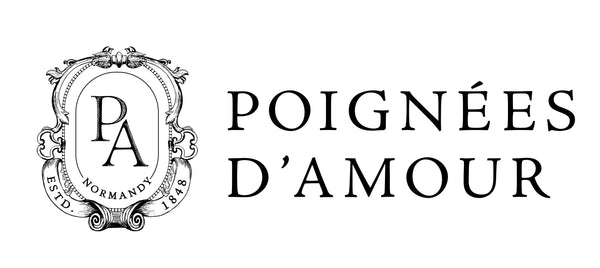
French Decor Evolution: A Historical Context
French decor has a rich and varied history, evolving through different eras while maintaining a distinct elegance and sophistication. From the opulent grandeur of the Louis Era to the minimalist simplicity of modernism, French decor has consistently set the standard for style and craftsmanship. This journey through the evolution of French decor highlights the key periods and styles that have shaped the interiors we admire today.
The Opulence of the Louis Era
 |
Louis XIV: The Sun King's Grand StyleThe Louis XIV era, also known as the Sun King era, was characterized by an emphasis on grandeur and opulence. French decor during this time was marked by elaborate ornamentation, luxurious materials, and symmetrical designs. The Palace of Versailles epitomizes this style with its lavish interiors, featuring intricate marquetry, gilded finishes, and grand chandeliers. Louis XIV's reign set the foundation for the extravagance that would define French decor for centuries. |
Regency Period: A Shift to Comfort and EleganceFollowing the death of Louis XIV, the Regency period under Philippe of Orléans introduced a transition towards more comfortable and elegant interiors. Furniture became lighter and more functional, featuring exotic woods and refined aesthetics. This period balanced luxury with practicality, paving the way for the more whimsical and ornate styles of the Louis XV era. |
 |
 |
Louis XVI: Neoclassical EleganceThe final phase of the Louis Era, under Louis XVI, saw a return to classical simplicity and elegance. Inspired by ancient Greek and Roman design, this period favored straight lines, symmetrical layouts, and restrained decoration. André-Charles Boulle and François Remon were among the designers who exemplified this neoclassical style, which emphasized beauty and function in equal measure. |
The Influence of Art NouveauAt the turn of the 20th century, the Art Nouveau movement brought a new wave of creativity to French decor. Characterized by organic forms, flowing lines, and intricate detailing, Art Nouveau was a reaction against the industrialization of the era. Hector Guimard, a leading figure in this movement, drew inspiration from natural elements, creating designs that were both innovative and elegant. Art Nouveau's influence can be seen in the use of vegetal and floral motifs, abstracted into fluid, asymmetrical forms. |
 |

|
The Modernism MovementSpanning from 1925 to 1965, modernism marked a significant departure from the ornate styles of the past. This movement emphasized minimalist aesthetics, functional forms, and the innovative use of industrial materials. Influential architects and designers such as Le Corbusier, Jean Prouvé, and Robert Mallet-Stevens played key roles in shaping this era. Their designs favored clean lines, geometric shapes, and a utilitarian approach, revolutionizing French interiors with a focus on simplicity and functionality. |
Key Characteristics of French Decor
Throughout its evolution, French decor has maintained several key characteristics that define its unique style:
- Elegance and Sophistication: French decor is renowned for its refined elegance, achieved through luxurious materials, intricate details, and harmonious color palettes.
- Historical Influence: French decor often incorporates elements from its rich history, such as antique furniture and classical motifs, creating a sense of timelessness.
- Comfort and Functionality: Despite its opulence, French decor prioritizes comfort and functionality, ensuring that each space is both beautiful and practical.
- Attention to Detail: French interiors are characterized by meticulous attention to detail, from intricate carvings on furniture to the selection of fine fabrics and finishes.
- Symmetry and Balance: A hallmark of French design is its emphasis on symmetry and balance, creating harmonious and visually pleasing spaces.
Integrating French Decor into Modern Homes
Contemporary interior design continues to draw inspiration from the rich heritage of French decor. Here are some ways to incorporate French elegance into modern homes:
- Mix Antique and Modern Pieces: Combining antique furniture with modern elements can create a unique and sophisticated look that bridges past and present.
- Use Luxurious Fabrics: Incorporating fabrics such as silk, velvet, and brocade can enhance the elegance of any room. Consider these materials for upholstery, drapery, or accent pieces.
- Focus on Symmetry: Arrange furniture and decor in a balanced and symmetrical manner to achieve a harmonious and visually pleasing layout.
- Choose Neutral Color Palettes: Neutral tones, complemented by subtle accents of color, create a serene and sophisticated atmosphere. Shades of white, beige, and gray are commonly used in French interiors.
- Incorporate Ornate Details: Pay attention to small details, such as decorative moldings, hardware, and accessories, to elevate the overall design.
Conclusion
The evolution of French decor is a testament to the enduring appeal of elegance, craftsmanship, and sophisticated design. From the grandeur of the Louis Era to the minimalist beauty of modernism, French decor has continuously adapted while maintaining its commitment to luxury and functionality. By integrating elements of French decor into modern interiors, it is possible to create spaces that are not only beautiful but also timeless, echoing the rich heritage and artistic excellence that define French interior design.
